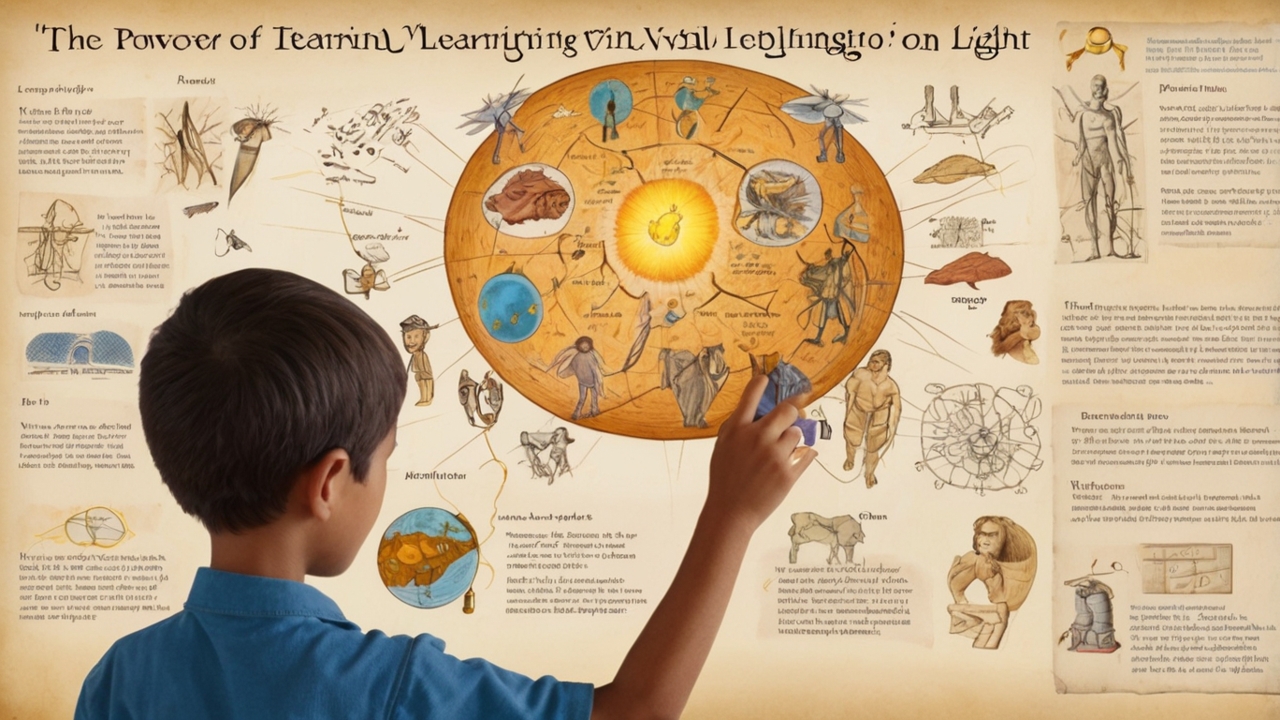Round Rock Journal – Visual Learning is a method that uses images, color, and spatial awareness to enhance understanding. Instead of relying only on text or sound, this approach involves pictures, charts, and videos. It helps students connect ideas faster and remember them longer. Studies show that visuals are processed up to 60,000 times faster than text. Personally, I believe visual learning transforms abstract concepts into vivid experiences that spark curiosity and retention.
“Read also: How to Build Self-Awareness for Effective Personal Growth“
Why Visual Learning Resonates Deeply with the Human Brain
The human mind is naturally wired for visuals. Studies in cognitive neuroscience reveal that nearly 90% of information transmitted to the brain is visual, and our visual memory is more durable than verbal memory. When students engage with infographics, diagrams, or mind maps, they activate both the creative and analytical sides of the brain. This dual activation enhances comprehension, retention, and long-term recall. In my perspective, this explains why visual learning doesn’t just teach it connects emotionally, turning data into stories and theories into living ideas.
The Role of Visual Learning in Light Education
Light Education an emerging educational model emphasizing flexibility, creativity, and multi-sensory experiences finds visual learning at its core. By integrating visual tools into the learning process, educators foster curiosity and motivation. Imagine a classroom where students explore physics concepts through holographic projections or biology lessons through augmented reality such experiences turn learning into discovery. Visual learning within Light Education also promotes inclusivity by accommodating diverse learning styles, especially for visual-spatial and neurodivergent learners who thrive through pattern and imagery.
The Science Behind the Effectiveness of Visual Learning
Scientific research supports the superiority of Visual Learning in improving retention and understanding. According to the Journal of Educational Psychology, students remember 80% of what they see, compared to just 20% of what they read and 10% of what they hear. Visual aids trigger the brain’s dual coding process, where information is stored both visually and verbally, reinforcing memory. Personally, I’ve observed how students using visual cues, such as color-coded notes or flowcharts, display stronger analytical skills and perform better in assessments. This demonstrates that the mind not only learns faster with visuals but also thinks more critically.
Modern Tools That Empower Visual Learning
In today’s digital age, technology amplifies the potential of visual learning like never before. Tools such as Canva, Prezi, Google Jamboard, and MindMeister enable teachers and students to visualize abstract ideas creatively. Educational platforms now include interactive videos, VR simulations, and gamified content, transforming traditional lessons into immersive journeys. For example, an environmental science class might use a 3D visualization of climate data, allowing learners to witness the effects of deforestation in real-time. Such tools make learning experiential not just informational aligning perfectly with the principles of Light Education.
The Emotional Impact of Learning Through Visuals
Visual Learning does more than enhance comprehension; it also deepens emotional engagement. When students encounter vibrant imagery or animated storytelling, they form stronger emotional connections to the material. This emotional resonance increases motivation and makes learning enjoyable rather than obligatory. I believe the reason visuals are so effective lies in their universality a picture transcends language, culture, and age. Whether a young child learning about space or a professional studying data visualization, imagery sparks curiosity and empathy, two essential components of transformative education.
“Read also: Vibe Analytics: How Fabi Is Transforming Business Intelligence for Everyone“
How Educators Can Implement Visual Learning Strategies
Integrating visual learning doesn’t require complex tools it begins with a shift in teaching mindset. Teachers can start by using color-coded mind maps, storyboards, or flow diagrams to explain lessons. Incorporating infographics instead of dense text, using illustrated summaries for revision, and encouraging students to create visual notes can dramatically improve engagement. Additionally, project-based learning enhanced by visuals encourages collaboration, allowing students to co-create digital posters or conceptual sketches. From my experience, when learners participate in visual creation rather than passive consumption, their confidence and critical thinking grow exponentially.
The Long-Term Benefits of Visual Learning
The advantages of Visual Learning extend far beyond the classroom. Learners who master visual comprehension develop stronger skills in problem-solving, design thinking, and digital literacy all essential in today’s knowledge economy. Moreover, visual learners tend to communicate ideas more clearly and persuasively, which is vital for leadership and innovation. Educational psychologists even argue that visual learning supports emotional intelligence, as it trains individuals to observe details, recognize patterns, and interpret nonverbal cues. In a world increasingly dominated by multimedia communication, visual literacy is no longer optional it’s a form of intellectual empowerment.
The Future of Education Is Visual
As an observer of global educational trends, I see Visual Learning as the cornerstone of the future classroom. It embodies what Light Education truly stands for illumination, creativity, and connection. Learning should not be confined to reading and memorization; it should be an art of exploration where visuals serve as windows to understanding. The success of this method lies in its simplicity: we learn better when we see, feel, and imagine. Ultimately, embracing visual learning means embracing the human instinct to learn through perception a truth that has guided civilization from cave paintings to digital classrooms.


